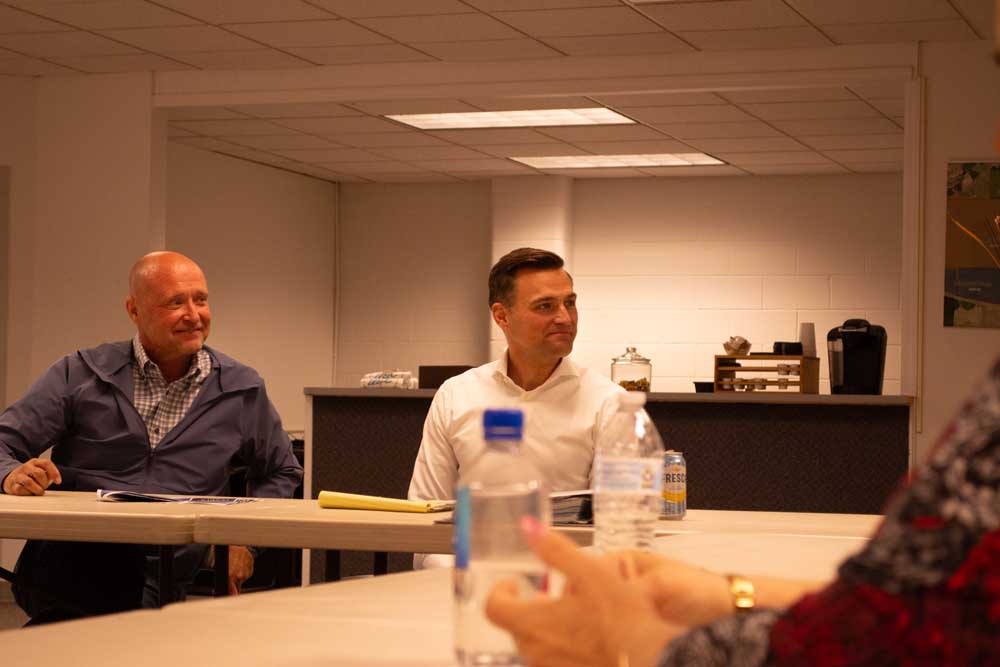Cat owners are warned to vaccinate cats against a deadly disease
Published 9:00 am Wednesday, November 3, 2021

- Beetlejuice sits on an exam table Friday, Oct. 29, 2021, at the Pendleton Animal Welfare Shelter, Pendleton.
Veterinarian and other animal welfare professionals have noticed an uptick in feline panleukopenia in Umatilla County. As they warn the public about this disease that kills cats, especially young kittens, they also spreading the word on how they can help prevent it.
Trending
“I’ve never seen it this bad,” Carol Boggs said.
Boggs is a volunteer and treasurer for Fuzz Ball Animal Rescue, Hermiston. She also assists Cat Utopia of Pendleton and at the Pendleton Animal Welfare Shelter, Pendleton.
Her work includes trapping, fostering and transporting animals. In a regular week, she traps around 20 cats and dogs, she said, but recent weeks have not been normal. Last week, she was not capturing animals at all, and she has limited all contact with the creatures she would ordinarily be helping, because of her fear of panleukopenia contamination.
Trending
Panleukopenia, also called “panleuk,” is an infectious disease among cats. Mark Sargent, Oregon Trail Veterinary Clinic veterinarian, explained details of the disease. Its literal translation is “all white low,” referring to its effect, lowering a cat’s white blood cell count.
Cats pick up the virus in their environment, the veterinarian said, sometimes from other cats, but soil also can be a source of infection. Indoor cats may be less at risk, but even they are susceptible to the disease if someone tracks the virus into their home.
Jessie Frischman, veterinarian with Hermiston Veterinary Clinic, added the disease attacks bone marrow, decreases white blood cells and sets up its victim for other infections. Symptoms include vomiting, loss of appetite and diarrhea. Death often follows, she said.
Kittens are especially at risk, as their immune system is immature and their body fat is low.
Sargent said Umatilla County has “seen a lot” of panleuk, a “flurry of it” in the last two months among strays.
“I don’t recall seeing an outbreak like this before,” he said.
Cases sometimes pop up “here or there, but nothing like this,” he said, adding he suspects it got into the right population, stray cats, and spread like “wildfire.”
Boggs, who fosters cats, also used the word “wildfire,” when describing panleuk transmission in her home. When she still was trapping animals, she brought home an infected cat and the disease spread within her home.
Having lost seven cats recently to panleuk, she is on the lookout for the disease. In addition to limiting her contact with other cats, she regularly disinfects her home, her car and herself with trifectant spray. The 53-year-old Hermiston resident has been taking care of cats her entire life, and said she is heartbroken by a disease she sees as being on the upswing as she has never seen before.
Cindy Spiess, owner of Pendleton’s Cat Utopia, called the situation as “really sad.” She also is on the board of directors for PAWS. She added she tends to see outbreaks every five or six years, but recent months have been atypical. This fall, she has heard of many cases.
She has not seen any cases in her own business, she said, but has heard of the disease spreading among fostered cats locally and in Walla Walla and Portland.
She recommended immunizations, and both Sargent and Frischman agreed, saying vaccinations are highly effective in preventing panleuk. Cat owners can get their pets vaccinated at local vet clinics or they can do it themselves at home. Vaccinations are available at local farm stores.
Robin Barker of Fuzz Ball Rescue, agreed about the usefulness of vaccinations, and she said she sees vaccinations as the solution to the local outbreak. The problem, she said, is the outbreak is biggest amongst cats that are least likely to be vaccinated, such as strays.
She has seen outbreaks in other cities, and she said she finds the situation sad.
Beau Putnam, Pet Rescue Humane Society of Eastern Oregon, also is concerned about the disease because it is difficult to treat. He said he has seen it among fostered kittens, and he wants people to vaccinate.
Veterinarian Frischman offered some hope about the current situation. She noted we are “coming out of kitten season,” during which there are fewer cat births. We will, then, see fewer deaths and less spread, because there will be fewer new cats to spread the disease.









